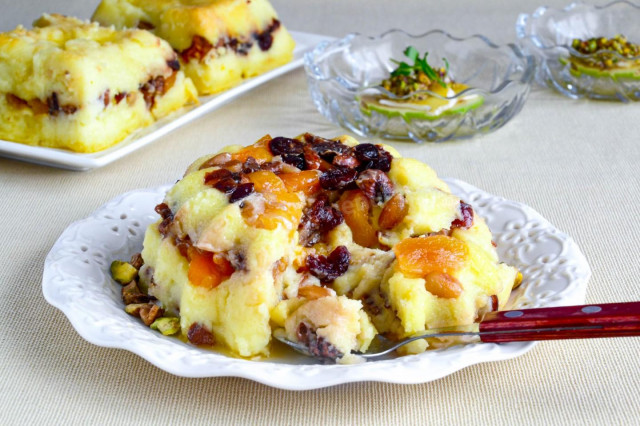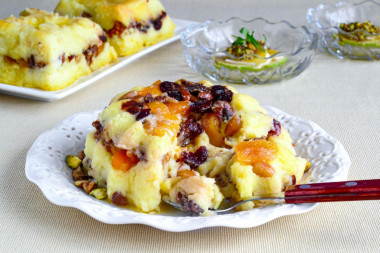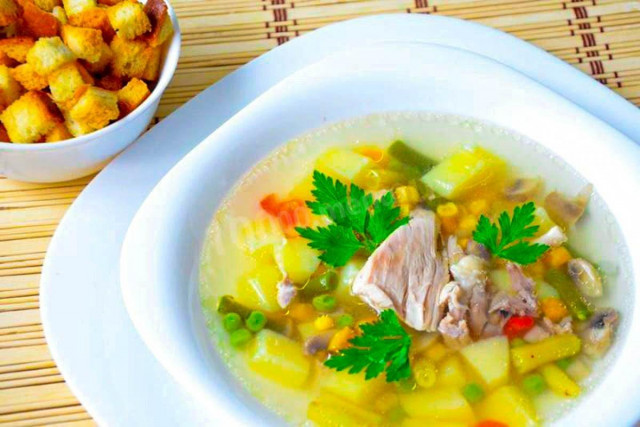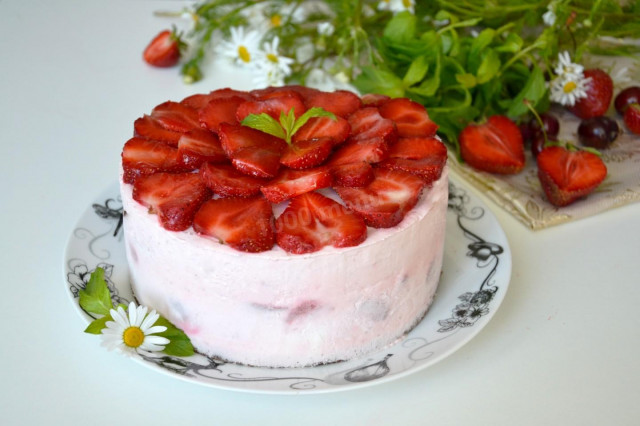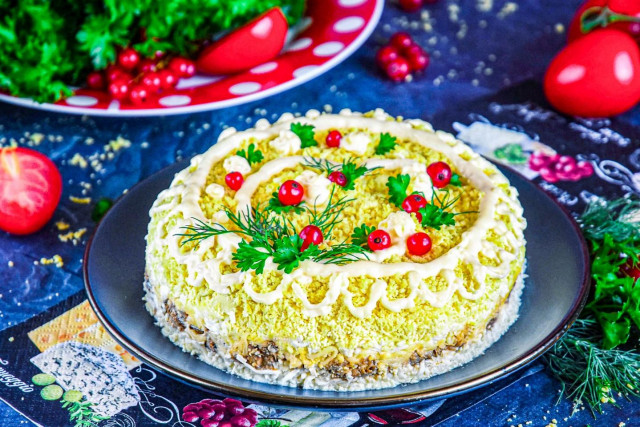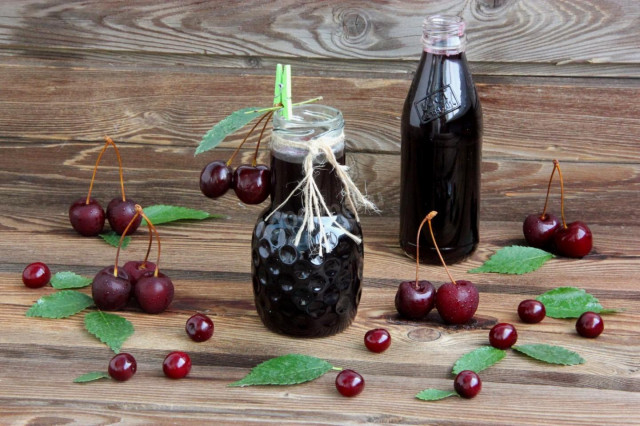Composition / ingredients
Step-by-step cooking
Step 1:
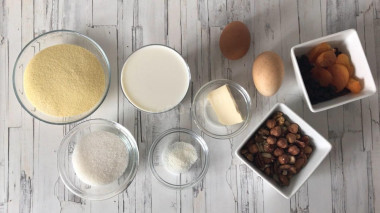
How to cook classic Guryev porridge? Prepare the ingredients. Take the fattest milk, ideally — rustic. Choose high-quality butter, without additives, corresponding to GOST. Any nuts will do, you can take their mixture. Like dried fruits, except dried apricots, it will be delicious with raisins, cranberries or prunes.
Step 2:
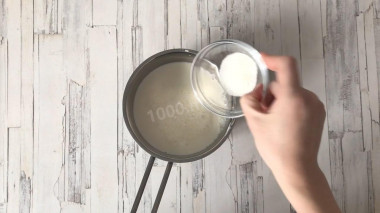
Guryev porridge is semolina porridge, which is first cooked on the stove and then baked in the oven. First of all, cook the porridge. Pour milk into a saucepan, add plain sugar and vanilla.
Step 3:
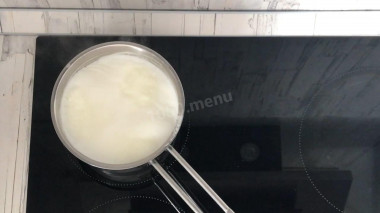
Bring the milk to a boil over medium heat.
Step 4:
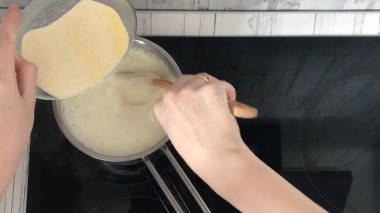
Pour semolina in a thin stream. To prevent the porridge from turning out with lumps, do it with constant stirring. Cook the porridge over low heat for about 5 minutes until thickened. Do not forget to stir it with a spatula.
Step 5:

You should get a fairly viscous porridge.
Step 6:
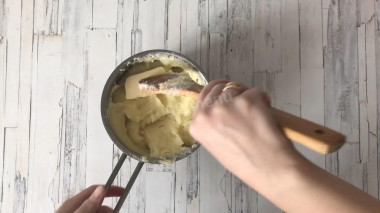
Remove the saucepan from the heat. Add butter to the porridge and mix until smooth.
Step 7:
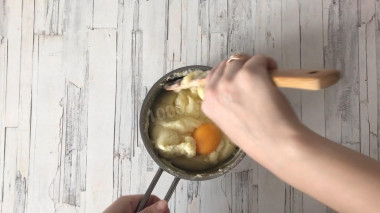
Wash and wipe the eggs. One by one, beat them into the porridge. Mix well after each.
Step 8:
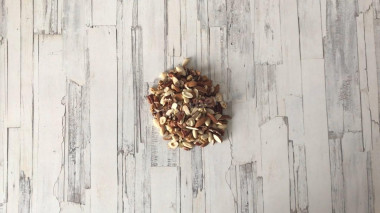
Chop the nuts finely with a knife. I used a mixture of nuts: pecans, hazelnuts, peanuts, walnuts.
Step 9:
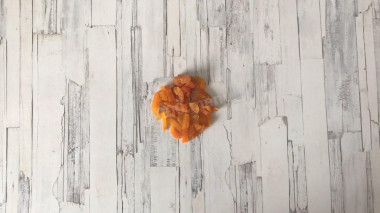
Wash dried apricots or other dried fruits well, then pour boiling water over them to wash off all the dirt. Dry them with a paper towel. Cut the dried apricots into pieces, leave the raisins intact.
Step 10:
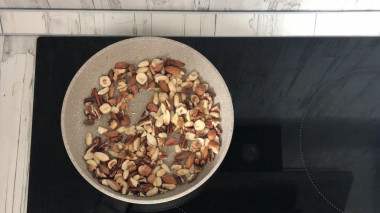
Fry the nuts a little in a dry frying pan — they will turn out more fragrant and crispy.
Step 11:
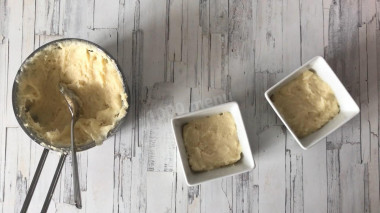
Take suitable baking molds. Either one large, or portions. Put a little semolina porridge on the bottom of the molds.
Step 12:
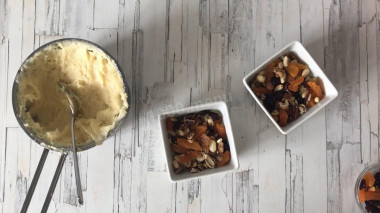
Sprinkle the porridge generously with nuts and dried apricots on top, then repeat the layers again. My molds were small and low, so I made only one layer of nuts.
Step 13:
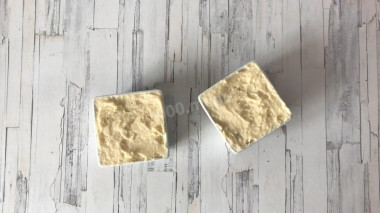
The top layer can be lightly sprinkled with sugar. Bake the Guryev porridge for about 30 minutes in the oven at 180 ° C. Serve the porridge hot, putting it on a plate with a slide and watering it with honey.
Be sure to wash the eggs before use, as even the seemingly clean shell may contain harmful bacteria. It is best to use food detergents and a brush.
How to choose semolina, cook the perfect porridge from it and much more, read the article about semolina and semolina .
Any heat-resistant form is suitable for this recipe. If you use a silicone mold, then you do not need to smear it with butter or margarine. But it is better to lightly lubricate metal, ceramic or glass dishes with vegetable oil so that the baking does not burn.
Caloric content of the products possible in the composition of the dish
- Whole cow's milk - 68 kcal/100g
- Milk 3.5% fat content - 64 kcal/100g
- Milk 3.2% fat content - 60 kcal/100g
- Milk 1.5% fat content - 47 kcal/100g
- Concentrated milk 7.5% fat content - 140 kcal/100g
- Milk 2.5% fat content - 54 kcal/100g
- Chicken egg - 157 kcal/100g
- Egg white - 45 kcal/100g
- Egg powder - 542 kcal/100g
- Egg yolk - 352 kcal/100g
- Ostrich egg - 118 kcal/100g
- Semolina - 340 kcal/100g
- Walnuts - 650 kcal/100g
- Black Walnut English Walnut - 628 kcal/100g
- Black Persian Walnut - 651 kcal/100g
- Walnut oil - 925 kcal/100g
- Granulated sugar - 398 kcal/100g
- Sugar - 398 kcal/100g
- Butter 82% - 734 kcal/100g
- Amateur unsalted butter - 709 kcal/100g
- Unsalted peasant butter - 661 kcal/100g
- Peasant salted butter - 652 kcal/100g
- Melted butter - 869 kcal/100g
- Dried apricots - 215 kcal/100g
- Uryuk - 290 kcal/100g
- Dried peaches - 254 kcal/100g
- Vanilla sugar - 379 kcal/100g

